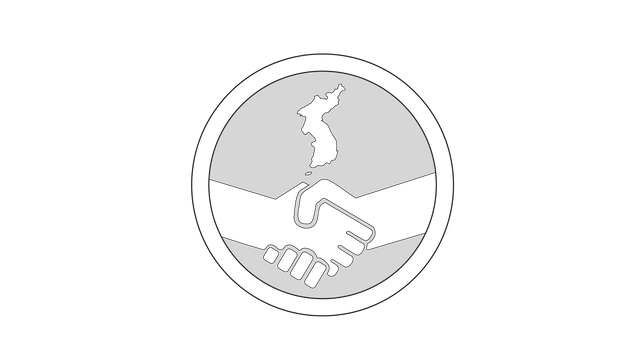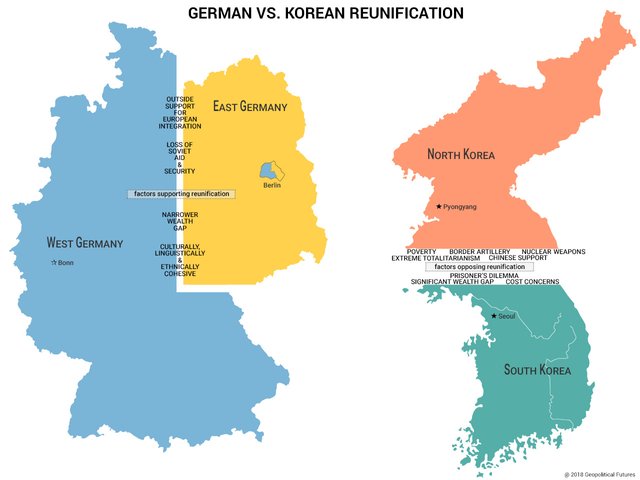[07/16] Thesis Proposal Blockchain Acceleration Usage to Facilitate North Korean Assimilation [1/3]

What is the Problem Statement?
How can I use blockchain technology (digital) to empower new built fabric (physical) along the DMZ border and accelerate the assimilation of North Koreans in a reunified society?
In addition to housing, there is speculation to what I believe needs to be designed for me to show what impact architecture can have regarding the peaceful reunification between the North and the South. In addition to co-habitation, there needs to be a campus or educational center that accompanies the housing to help facilitate the assimilation of the North Korean into everyday South Korean society. With the consideration of co-habitation, I am in the process of thinking of a complete program list that is required for a post-unification North Korean to comfortably assimilate into modern day society.
Currently, many people are speculating the future of North and South Korea, including social, political, and economic implications. According to the book, The Search for a Unified Korea, Eui-Gak Hwang predicts an implosion within North Korea, therefore the country would require help from other countries. This book was published in 2014, and implied the self-implosion of North Korea, because it cannot sustain feeding its people through droughts.
The reunification process is very complicated and must consider the radical contrast in lifestyle between North and South Korea. Important issues are to be compared side-by-side, where social, political, and economic structures are compared between the North and the South.

I look to design an architecture design project that mimics the framework of an incubator, where it first begins as an educational facility at the scale of one or two buildings, with no more than around 100 North Koreans. It will essentially be a social experiment, in which this educational facility will teach North Koreans about the post-modern world, which is perceived to be radically different than lifestyles in for example the United States or South Korea.

This kind of step-by-step system tries to find that balance between taking a risk, but also minimizing that risk. It does not funnel all of Korea’s resources, but more of a project / experiment based on trust. One problem with post-reunification is that North Korea’s lifestyle has been so different from other more modern-day societies such as the United States or South Korea, therefore the most logical thing to do is to create a hub where North Koreans can learn about the world, what things they were taught incorrectly, and how the facility begins to essentially un-condition whatever propaganda was jammed into their heads during the lower points in North Korea history.
In terms of rooting this proposal into reality and its viability, I am proposing a cryptocurrency that is specially going to be used for addressing the financial situation for the reunification costs. This cryptocurrency is going to be called UnityCoin and this coin attempts to address four of the main issues regarding the reunification process:
- Different kinds of currency used on either side.
- The wealth gap between the North and the South.
- Funding for the reunification project itself.
- Other countries' involvement with the reunification process.

Different Kinds of Currency on Both Sides
One of the main worries surrounding Korean reunification is integrating a currency that can be used on both sides. North Korea has their own Won, while South Korea uses their own Won. UnityCoin can be a paper-less universal currency that can be used as payment within the educational facility, while serving as a teaching lesson to both North and South Koreans about the potential of what crypto-currency and blockchain technology are capable of inside the educational facility.

source
The Wealth Gap between North and South Koreans
The problem with using the Berlin Wall as a precedent to the Korean Divide is that the wealth gap is too large in comparison to the Berlin Divide. West Germany was only 2 to 3 times richer than the East side, but South Korea is between 12 and 40 times richer than North Korea. UnityCoin can become a liaison between the sides with different currency exchanges regarding the North Korean Won and the South Korean Won.

source
Funding for the Reunification Itself
The average cost of Korean reunification is approximately $1 trillion USD. The perceived surge of North Koreans into the unified Korea will cause stagnation or economic collapse. With the introduction a UnityCoin-based blockchain system, it can be both investment and donation-based, where all transactions are open source and exposed to the public, therefore everyone will know where the donations are being sent to.

source
Other Countries’ Involvement in the Reunification Process
This UnityCoin-based blockchain can provide incentive for other countries to invest in the reunification financial process. If they want to get involved, they can invest large amounts of UnityCoin to support the debt that will accrue post-reunification.
What is the Agenda?
There has always been consistent fear from South Korea and the rest of the world due to North Korea’s reckless nuclear missile testing and lowering walls could always come at a risk if North strikes after defenses are laid down. Even though there is a possibility of North Korea plotting with ulterior motives, forgiveness is the only option that can lead to a brighter future. It’s not like realistic implications are not considered at all but risks always must be made in a controversial project like this one. As research was on-going, there have recently been efforts of a peaceful meeting between leaders Moon Jae-in and Kim Jong Un. On April 27, 2018, North and South Korea pledged to bring a formal end to the Korean War, 65 years after hostilities ceased.
This proposal is very controversial in that there are many different parties of people that oppose the reunification of North and South Korea. Support for reunification in South Korea has been falling, especially among the younger generations. In the 1990s, the percentage of people in government polls who regarded reunification as essential was over 80%, but that percentage dropped to 56% when the poll was taken on 2011. Younger South Koreans are more worried about issues related to economy, employment, and living costs. The standard narrative for a growing indifference to North Korea among South Korean youths is the cultural generational gap, where young people have no living memory of the division nor its immediate consequences.
Transitioning to the economic worries of the younger generation, these South Korean youths are turning away from reunification due to the financial burden that their generation will have to carry because of it. Over the decade of reunification, South Korea would have to pay as much as $591 billion dollars, but the former South Korean president attempted to start a public funding effort for reunification, but only collected around $700,000. For South Korea’s younger generation, the cruel tangibility of unemployment, financial stagnation, and societal pressures heavily outweigh the vague, distant reality of missile to the North.
The four major countries surrounding North and South Korea, (China, Japan, United States, Russia), would have to propose a regional cooperation, or would simply not want to see the Koreas unify for different reasons. Even though recent news articles state that denuclearization will be part of the deal to bring a formal end to the Korean War between North and South Korea, who’s to say that they do not restart the nuclear facilities under one unified Korea. With South Korea’s rapid economic growth and the North’s already existing experience with nuclear weapons, Korea might just become to powerful of a country, in which other larger countries would be unable to control them. Chances are the unified Korea would be more democratic than communist, putting an Allied force right on the doorstep of the Chinese, which would put them at unease.
A unified Korea should utilize its own cryptocurrency to tackle many of Korea’s problems when faced with reunification, with one of the most important issues being how it should focus on itself and leave other countries not involved with whatever’s going on inside Korea’s rebuilding process.
![country in to out [Converted].png](https://steemitimages.com/640x0/https://cdn.steemitimages.com/DQmagnXLRH33sSQyzXf3cRfRsbJKcNxbFMy9KZY2qvd94nX/country%20in%20to%20out%20[Converted].png) | ![country OUT [Converted].png](https://steemitimages.com/640x0/https://cdn.steemitimages.com/DQmbNVDS2RADrtMVDhnCQQ6psVXru3ZETMuja7YTUUNtpmY/country%20OUT%20[Converted].png) |
|---|
After Korea has condensed its strength and has worked out their infrastructure from the inside, Korea can begin to expand outward and reach out to the other nations as a NEUTRAL nation, where no one can pin a side politically on the unified Korea as a nation.
This thesis wants a peaceful reunification and utilize that reunification as a building ground for distributed architectural development on the borderline conditions.